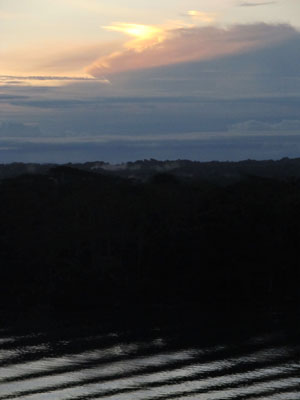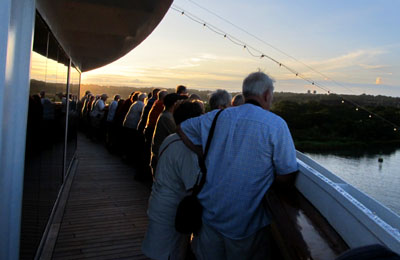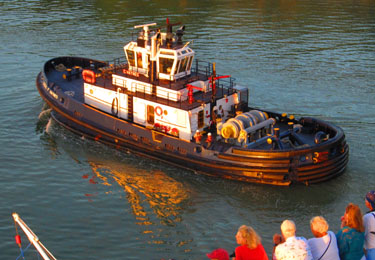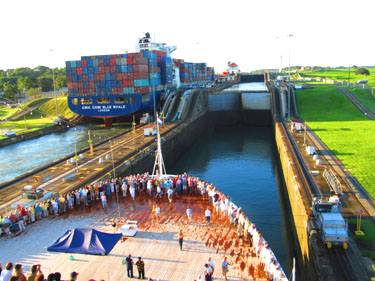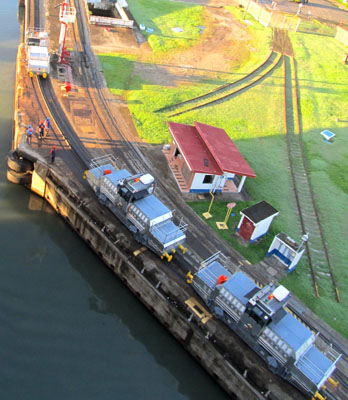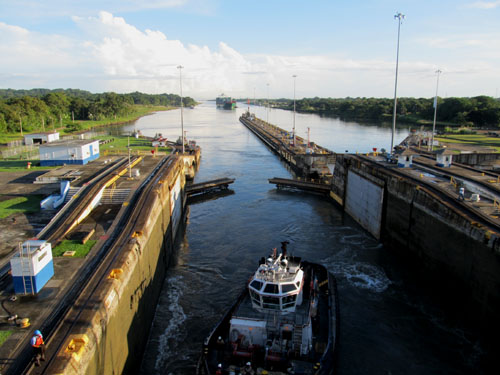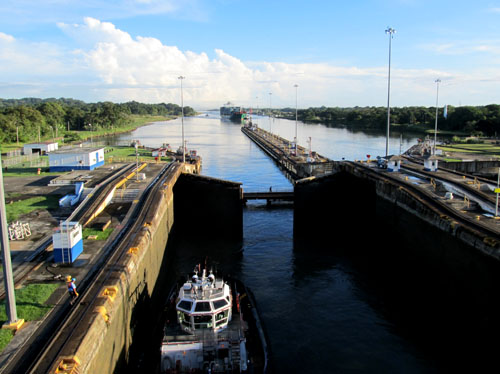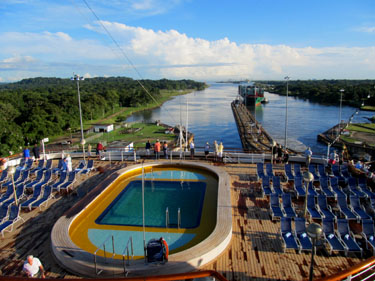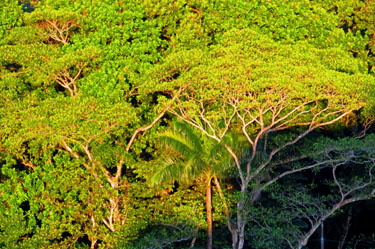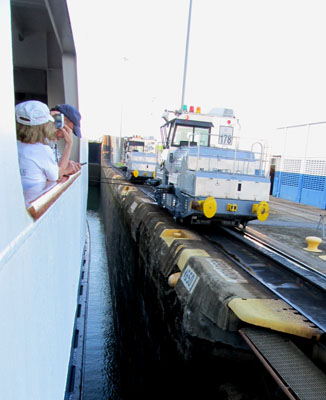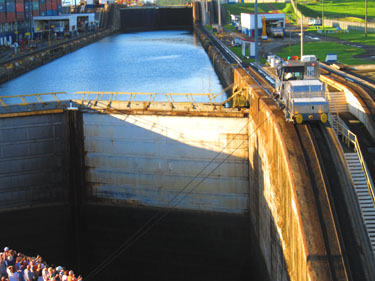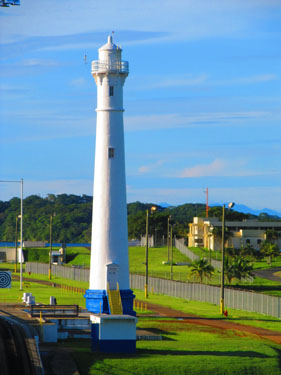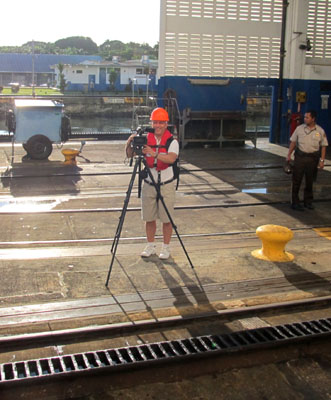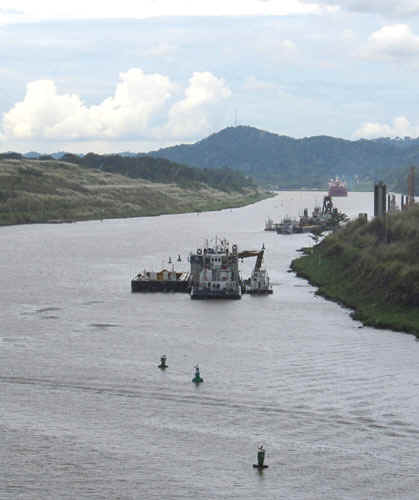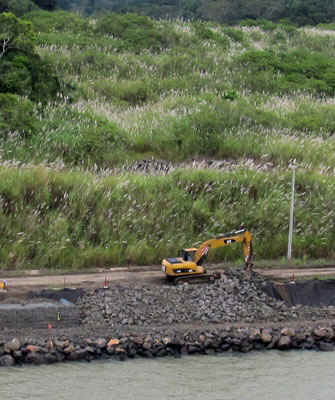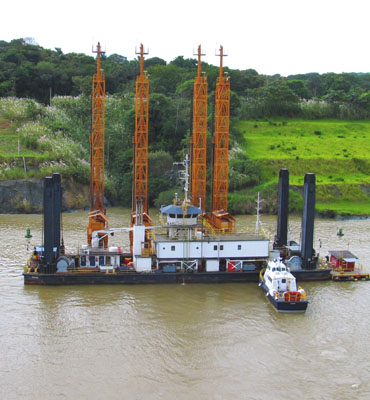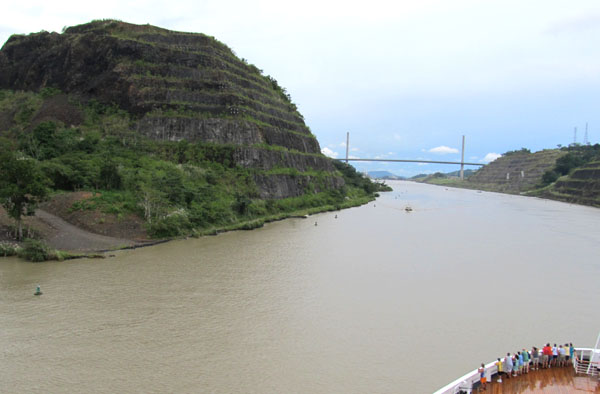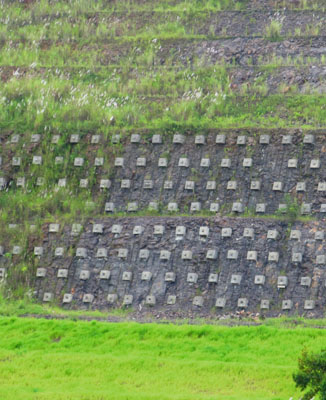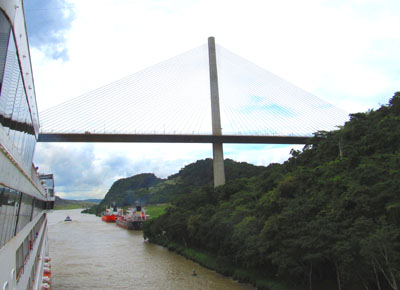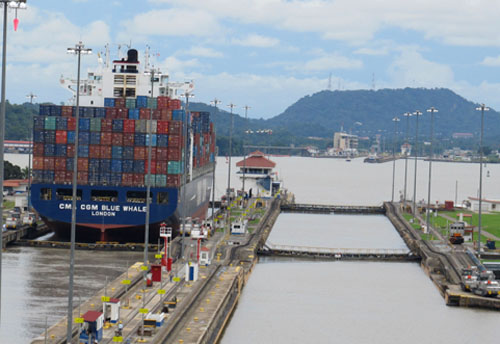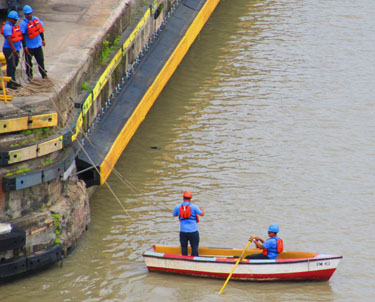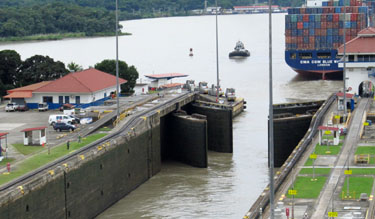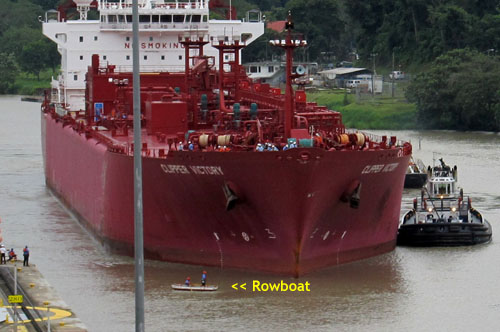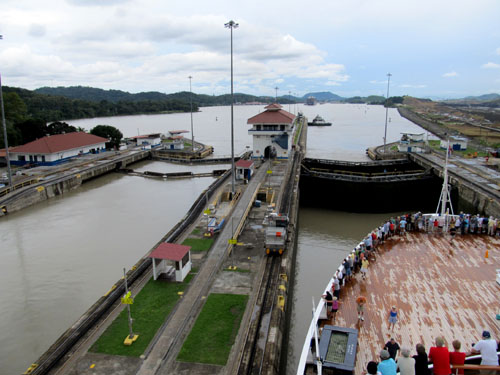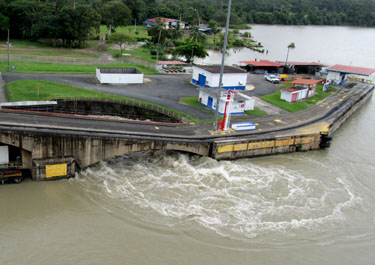Dean & Ginny's excellent adventures... Main Adventure PagePanama
Cruise--2012: <<
Part 1 Part
2
Part 3 >>
Part 4 >>
Part 5 >>
Part 6 >>
Part 7 >>
Part 8 >> |
|||||||||||
|
|||||||||||
|
As we approach the first (lowest) lock, we can see the single lane bridge for vehicle and pedestrian traffic from one side of the canal to the other. The ships have the right of way, so the vehicles are limited to times when the lower gates are closed--first one way and then the other. You can see the cars and buses lined up on the right waiting their turn.
Looking forward as we enter the lock, our three starboard electric mules wait for our lines. There are three mules on each side with two toward the bow and one at the stern. There is not much spare room for our ship. (It's called a Panamax ship because they don't take ships any wider.) The mules' function is to keep a perfect tension between the two sides so we don't hit the sides of the locks. We move under our own power, though. A fully-loaded cargo ship, the CMA CGM Blue Whale from London, is ahead of us in the left-hand set of locks. We would follow the Blue Whale for the next eight hours. Looking behind our ship (See below.), one tug enters our lock and the single lane bridge closes behind it. Then the back doors of the lock close.
While we were paying close attention to the locks and all the activity surrounding their operations, once in a while we'd look at the broader view. It was a a beautiful day and the view from a higher deck looking back over the aft pool. There was a dense jungle on either side.
|
|||||||||||
|
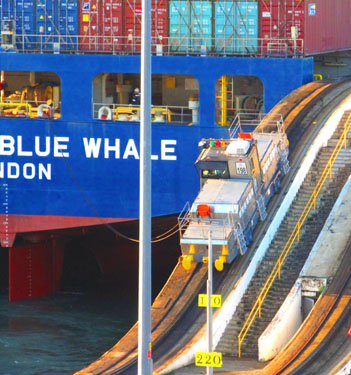
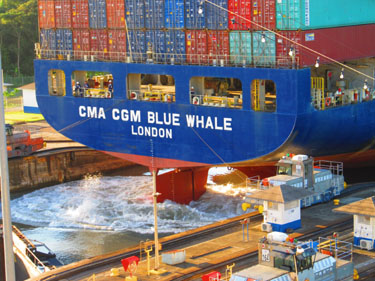
Meanwhile, the Blue Whale is ready to move to the third lock on its side. Its back mule climbs the steep incline and then you can see the water churning as it moves forward under its own power. |
|||||||||||
|
When the gates close, railings pop up and workers can cross from one side to the other. Warning bells ring as the gate is about to open. As we reach the Gatun control tower at the beginning of the second lock, one mule is returning through arched opening in the center, while our lead port mule is climbing its steep section up to the second lock. Also a lighthouse stands to our right as we pass through.
Ship photographers stepped ashore during our passage through the three Gatun locks to record our passage for the cruise video and for still photos. In front of the photographer you can see the close-up of the cogs between the mules' tracks--these are most needed for the steep inclines so they don't lose ground. The Gatun headquarters and welcome sign is on the incline of the third lock. After we're through the third lock we are in Gatun Lake.
Looking to our right as we enter the lake, we can see the huge earthen dam with a concrete spillway into the Chagres River.
When we look back to the left, we see all the cranes where a third and larger set of locks are being constructed. With everything we know now, it will be much faster than the first time around, but considering all the original problems, the old locks work extremely well. Our tugboat gives itself a freshwater shower in the lake.
As we look straight ahead there are several ships at anchor. Some are on a northward route and are waiting until the morning southbound ships are out of the locks, while others did not know their schedule in advance and are waiting for an open slot. The locks operate around the clock now since lights were installed in the 1960s.
Because this had been a mountainous region, the tops of the peaks became islands--lots of them. The ships have a circuitous route to follow between the islands and have these targets to line up as they set a course for each leg of the trip. If they are traveling in a one-way convoy, they use the crosses, but if there is traffic in both directions, they need to use the vertical lines. It's been 100 years since this lake was built and the islands and the shorelines look pretty much like natural waterfront lands now. |
|||||||||||
|
|||||||||||
